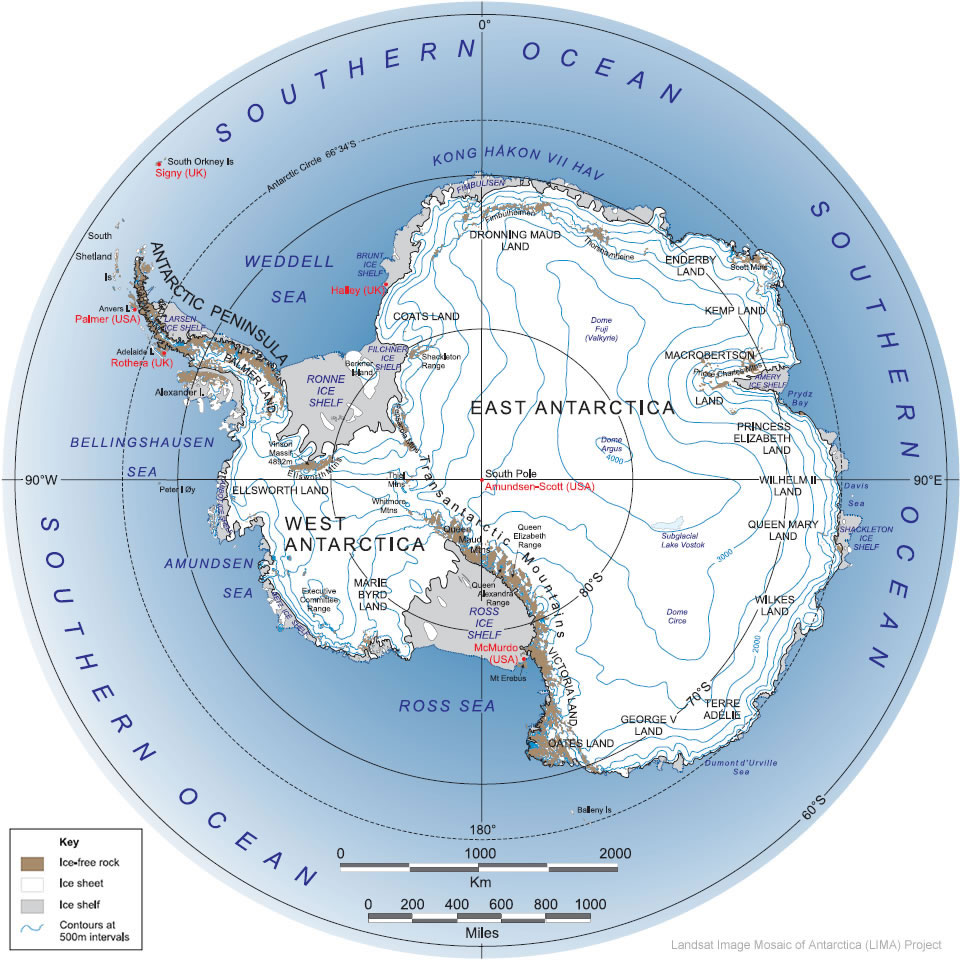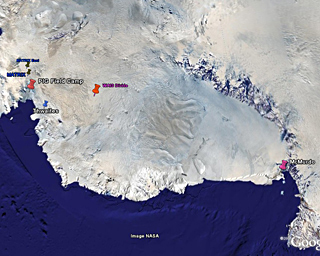Motivation
The Amundsen Sea Embayment (ASE) Sector of the West Antarctic Ice Sheet is the most dramatically changing portion of Antarctica -- it is presently losing mass at a rate that accounts for about 10% of the ongoing increase in global sea level. Local and global trends suggest this contribution may increase, drawing a larger fraction of the 1.5 meters of sea level equivalent from the region on time scales that are most important to humans. Owing to the topography of this region, there is a large, seawater-filled 'cavity' below the ice sheet seaward of the 'grounding line' - the point where the sheet loses contact with the solid earth and floats - and the ice cannot avoid continued exposure to seawater even if retreat persists. This raises the concern that future retreat may affect an ever larger portion of the ice sheet, further accelerating sea level rise; and it highlights the potential role of oceanographic processes in affecting glacial retreat.
Recent ice-sheet observations have emphasized the vigor of ocean-ice mass exchange beneath Antarctic ice shelves. For example, changes of the grounded ice throughout the Amundsen Sea are largest nearest the coast and propagate rapidly inland signaling the ocean's impact on the ice as the primary forcing and the ability of the ocean to quickly and dramatically impact the interior ice sheet. Despite the critical role of the ocean-ice shelf system in changing the ice sheet on human-relevant time scales, direct measurements are woefully lacking. There has never been a sustained study of the sub-ice-shelf environment. Inferences of important processes under the ice shelf are based on sparse measurements in the surrounding ocean and parameterizations into models are preliminary, at best. Direct observation of related processes under sea ice illustrate the complexities of heat, salt and mass exchange in the sub-ice ocean environment and the irreplaceable need for direct measurement on multiple spatial and temporal scales.
Goal and Objectives
Our goal is to understand the interaction of the ocean and ice (heat, mass and salt fluxes) at the sub-ice-shelf interface and to incorporate this knowledge into a coupled model that includes dynamics of the ocean and of the ice along with their interaction.
The primary objectives to achieve this goal are:
- Define the shape (surface elevation and thickness) of the ice shelf
- Define the shape of the ocean cavity beneath the ice shelf
- Access the cavity by drilling through the ice shelf
- Develop and deploy remotely controlled instrumentation to measure the temporal and spatial variations of water properties and of the mass exchange with the ice shelf
- Interpret these measurements to define the nature of heat, mass and salt exchange between the ocean and the ice
- Visually explore the ocean cavity, sea floor and ice-shelf underside
- Incorporate the interactive processes into a coupled ocean-ice dynamics model
PIne Island Glacier
Pine Island Glacier (PIG) is thinning, retreating and accelerating making it representative of the suite of outlet glaciers discharging into the Amundsen Sea Embayment. It has a deep grounding line that connects to a deep interior basin without significant basal obstruction and is probably being rapidly eroded at depth by relatively warm Circumpolar Deep Water. There are a number of special features of PIG that make it the best choice for this study rather than other ASE glaciers. It is the fastest glacier in Antarctica and has been observed from aircraft and satellites longer than any other ASE glacier.
|
|

